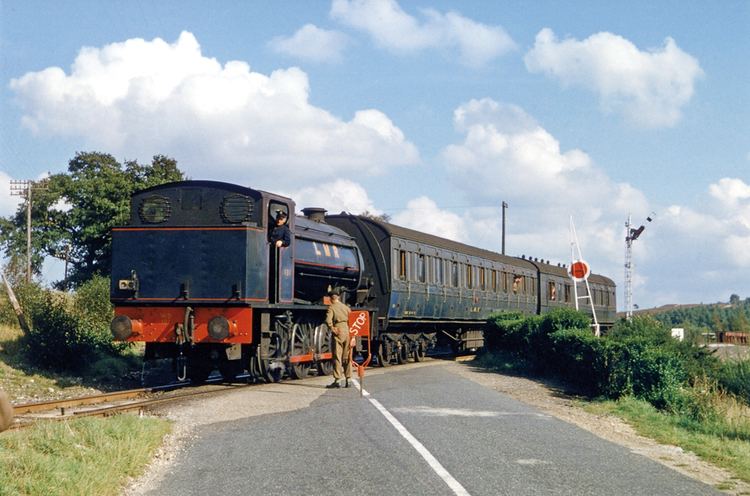 | ||
Longmoor military railway
The Longmoor Military Railway (LMR) was a British military railway in Hampshire, built by the Royal Engineers from 1903 in order to train soldiers on railway construction and operations.
Contents
- Longmoor military railway
- Longmoor military railway open day 5th july 1969
- Route
- Operations
- Railway Inspectorate
- Locomotives
- Accidents and incidents
- Closure
- Preservation
- Preserved Ex LMR Locomotives
- In popular culture
- References

Longmoor military railway open day 5th july 1969
Route
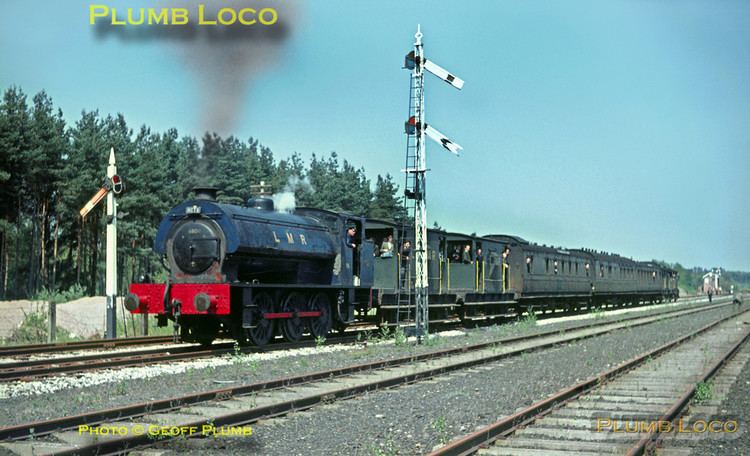
Authorised for construction from 1902, activities date from 1903 when an 18 in (457 mm) gauge tramway was laid to assist in removing 68 large corrugated iron huts from Longmoor Military Camp Camp to Bordon.
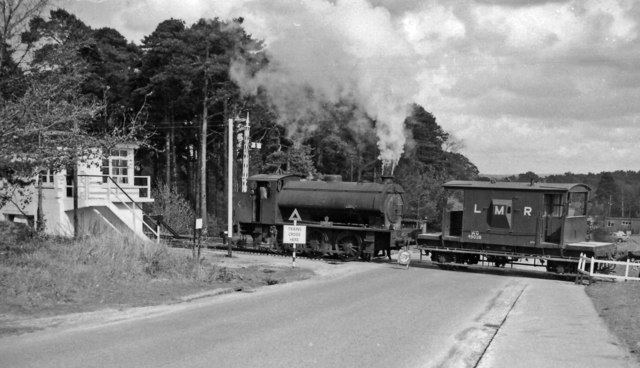
The railway was relaid to 4 ft 8 1⁄2 in (1,435 mm) standard gauge in 1905–1907 and was initially known as the Woolmer Instructional Military Railway. It was renamed the Longmoor Military Railway in 1935. The Liss extension was opened in 1933. The stations and junctions included:

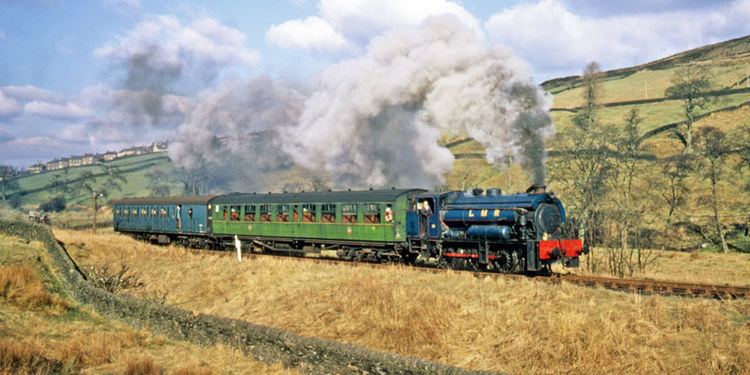
An additional loop ran eastwards from Longmoor camp via a station at Hopkins Bridge to Whitehill Junction, completed in 1942. This provided circular running to the line, allowing for improved training without the need to turn trains at the terminals.
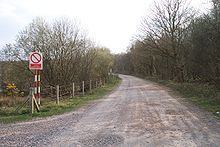
As a training railway, it was often being constructed/deconstructed. The layout would often change, and at one time housed a machine which could lay 1,500 yards (1,400 m) of track a day. At its peak, the railway ran to over 70 miles (110 km) of operational laid track and sidings.
Operations
The vehicles and stock on the LMR were very much an assortment to give the maximum learning opportunity. Well over a thousand locomotives had associations with the railway, although many only through the need for storage. The same was true of the signalling at the various locations on the line, including an Army version of flag signalling. After the end of World War II, the collection also included captured enemy equipment, including a "Schienenwolf" or railroad plough: a German wagon which dragged behind it a huge hook, used to destroy sleepers and so render railway lines unusable to advancing enemy troops.
In addition to the various military items, there were old versions of standard passenger carriages. A passenger service was operated over the line at various times, nominally for personnel required on the railway, and others from the War Department/Ministry of Defence and their families.
There was only one fatal accident recorded on the line, which occurred in October 1956.
With a declining military role for railways both in Britain and the rest of the world, it was inevitable that the significance of the facilities offered by the LMR would be reduced in later years. Even so, the LMR was still important enough for the tracks of the Bentley to Bordon branch to be left in place when passenger services were withdrawn on 16 September 1957. This line remained in place as, although there was a British Railways connection at Liss, the Bordon branch made it easier to accommodate the movements of military traffic at short notice. In 1966, the movement of goods over the Bordon branch was suspended, and the line was taken up in 1967.
Railway Inspectorate
Among those who learned the workings of railways on the LMR, there were a select band who continued in railway-related work after leaving the services. These were the members of the Railway Inspectorate, whose remit is to enquire into the circumstances surrounding British railway accidents. The first Chief Inspecting Officer of Railways not to have been trained in the army was R. J. Seymour, appointed in 1988.
Locomotives
The following standard gauge locomotives were in use in 1914:
The following standard gauge locomotives were present in 1947:
The following standard gauge locomotives were present in August 1963:
A notable locomotive based on the LMR was 'Kingsley', an 1886-built 4-4-0 tank locomotive. This had formerly been locomotive No.10 of the Midland and Great Northern Joint Railway and was the last surviving locomotive from this company when scrapped in 1953.
Accidents and incidents
On 13 October 1956 a passenger train hauled by Class 8F 2-8-0 WD512 was involved in a head-on collision with a permanent way train hauled by 0-6-0 diesel shunter WD877 Bari between Weaversdown Halt and Liss Forest Road stations. Six soldiers who were in a brake van behind the diesel locomotive were killed and eight were injured. The cause of the accident was driver error on the part of the driver of the passenger train, who had entered the section without authority. This was compounded by the signalling arrangements at Liss Forest Road, where there was no trap point to prevent the train entering the section after passing a danger signal.
The signalling system at Liss Forest was single line telephone and ticket. The block man wrote out the ticket even though the work train was still in section. The ticket was exchanged for the one engine in steam key which controlled the section from Liss Forest to Liss. This saved the block man the trip of walking up the platform with the ticket after the work train had cleared. It was a misty day and the passenger train armed with the ticket passed the signal at red which then led to the fatal crash.
Closure
In the light of the reducing role of the military and the severely reduced British Empire, it was decided by the Ministry of Defence to close the railway. On hearing of its impending closure local locomotive preservation groups became interested in acquiring the small but complete rail system, and a bid was placed to purchase LMR along with the airstrip at Gypsy Hollow which would have enabled the production of a unique transport museum. The MOD rejected this proposal, which had been backed by the Association of Railway Preservation Societies and The Transport Trust. However the Army did offer the last 1½ miles of line from Liss Forest Road to Liss. The offer was accepted, a provisional lease was drawn up and planning permission was sought for developments at Liss.
Unfortunately the people of Liss did not share this enthusiasm and opposed the planning permission. Several residents raised £9,100 in a successful bid to buy this last piece of line. Longmoor Military Railway closed down with a ceremonial last day of operation on 31 October 1969, though for another two years some locomotives and stock remained on site, and there were occasional movements. Three items of rolling stock (a van, a brake van, and a bogie flat) still remain on the Longmoor site, as part of the FIBUA training village.
Preservation
Some of the stock of the LMR did pass into the hands of preservationists, for example Hunslet Austerity 0-6-0ST No.118 Brussels to the Keighley and Worth Valley Railway, and many relics went to the Museum of Army Transport at Beverley, Yorkshire, itself since closed, with the exhibits transferred to care of the National Army Museum, although mostly held in storage. WD Austerity 2-10-0 locomotive LMR 600 Gordon, resident on the Severn Valley Railway for many years, was donated to the SVR by the National Army Museum in 2008.
Preserved Ex-LMR Locomotives
Some of the Hunslet Austerity tanks were only ever at Longmoor for storage, and were not used operationally there.
In popular culture
The railway was used as the location for a number of films including The Lady Vanishes (1938), Bhowani Junction (1956), The Inn of the Sixth Happiness (1958), Runaway Railway (1965), The Great St Trinian's Train Robbery (1966), The Magnificent Two (1967) and Chitty Chitty Bang Bang (1968).
In February 1956 the railway was used to stage a train derailment for the BBC programme Saturday Night Out when Ex-SR King Arthur class locomotive 30740 Merlin and three coaches were pushed down an incline onto a specially canted section of track.
